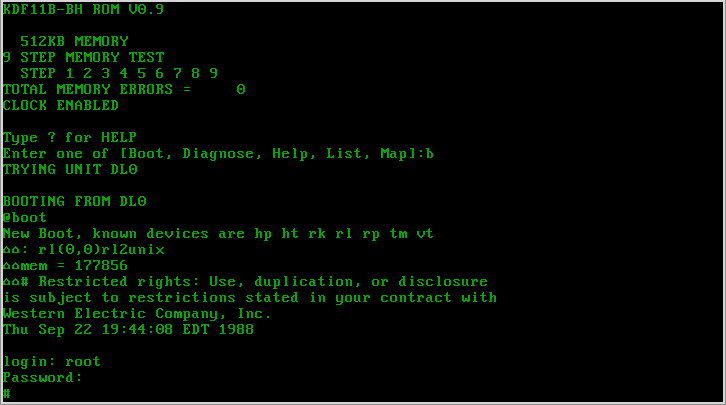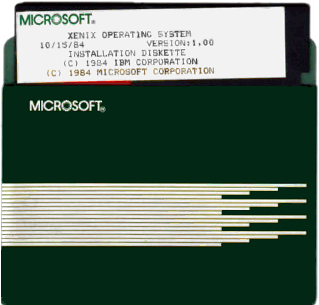|
Human Computing Resources Corporation
Human Computing Resources Corporation, later HCR Corporation, was a Canadian software company that worked on the Unix operating system and system software and business applications for it. Founded in 1976, it was based in Toronto. By a description of one of its founders, HCR was a "UNIX contract R&D and technology development and marketing firm." The company was most known for its extensive knowledge of Unix, for porting Unix to new hardware platforms, for developing compilers as part of the porting work, and for consulting and product development work on Unix. It was a pioneer in the Unix industry and by one account was the second firm ever to commercially support Unix. By 1990 HCR was a prominent player in the Canadian Unix scene. HCR was acquired by the Santa Cruz Operation (SCO) in 1990. It became the subsidiary SCO Canada, Inc., which existed until 1996 when the Toronto offices were closed. Origins at the University of Toronto Human Computing Resources was founded in ... [...More Info...] [...Related Items...] OR: [Wikipedia] [Google] [Baidu] |
Ronald Baecker
Ronald Baecker (born October 7, 1942) is an Emeritus Professor of Computer Science and Bell Chair in Human-Computer Interaction at the University of Toronto (U of T). He was the co-founder of the Dynamic Graphics Project, and is the founder of the Knowledge Media Design Institute (KMDI) and the Technologies for Aging Gracefully Lab (TAGlab). He is the author of ''Computers and Society: Modern Perspectives'', published by Oxford University Press in 2019, co-author of ''The COVID-19 Solutions Guide'' published in 2020, and author of the latest independently published ''Digital Dreams Have Become Nightmares: What We Must Do'' in 2021. Education He returned to his alma mater to study Computer Science at MIT's Department of Electrical Engineering and received his Ph.D. in June 1969. Summary of research interests Baecker is an expert in human-computer interaction (HCI), user interface (UI) design, software visualization, multimedia, computer-supported cooperative work and learning, ... [...More Info...] [...Related Items...] OR: [Wikipedia] [Google] [Baidu] |
Yonge Street
Yonge Street (; pronounced "young") is a major arterial route in the Canadian province of Ontario connecting the shores of Lake Ontario in Toronto to Lake Simcoe, a gateway to the Upper Great Lakes. Once the southernmost leg of provincial Highway 11, linking the provincial capital with northern Ontario, Yonge Street has been referred to as "Main Street Ontario". Until 1999, the ''Guinness Book of World Records'' repeated the popular misconception that Yonge Street was long, making it the longest street in the world; this was due to a conflation of Yonge Street with the rest of Ontario's Highway 11. Yonge Street (including the Bradford-to-Barrie extension) is only long. Due to provincial downloading in the 1990s, no section of Yonge Street is marked as a provincial highway. The construction of Yonge Street is designated as an Event of National Historic Significance in Canada. Yonge Street was integral to the original planning and settlement of western Upper Canada in the ... [...More Info...] [...Related Items...] OR: [Wikipedia] [Google] [Baidu] |
Version 7 Unix
Seventh Edition Unix, also called Version 7 Unix, Version 7 or just V7, was an important early release of the Unix operating system. V7, released in 1979, was the last Bell Laboratories release to see widespread distribution before the commercialization of Unix by AT&T Corporation in the early 1980s. V7 was originally developed for Digital Equipment Corporation's PDP-11 minicomputers and was later ported to other platforms. Overview Unix versions from Bell Labs were designated by the edition of the user's manual with which they were accompanied. Released in 1979, the Seventh Edition was preceded by Sixth Edition, which was the first version licensed to commercial users. Development of the Research Unix line continued with the Eighth Edition, which incorporated development from 4.1BSD, through the Tenth Edition, after which the Bell Labs researchers concentrated on developing Plan 9. V7 was the first readily portable version of Unix. As this was the era of minicomputers, with ... [...More Info...] [...Related Items...] OR: [Wikipedia] [Google] [Baidu] |
Logica Plc
Logica plc was a multinational IT and management consultancy company headquartered in London and later Reading, United Kingdom. Founded in 1969, the company had offices in London and in a number of major cities across England, Wales and Scotland, as well as in other countries around the world. It was responsible for many telecommunications infrastructure projects, such as the design of the SWIFT network for international money transfers, the Euronet packet-switching network, and the Bay Area Rapid Transit in San Francisco. Following the acquisition of CMG in 2002, the company was known as LogicaCMG from then until 2008, when it changed its name back to Logica. The company's main business at that point was in providing consulting, systems integration, and IT outsourcing in both the public and private sectors. Logica was acquired by Canada-based CGI Group in 2012 and the Logica brand name ceased being used in 2013. History Origins Logica was started as a systems integrat ... [...More Info...] [...Related Items...] OR: [Wikipedia] [Google] [Baidu] |
Xenix
Xenix is a discontinued version of the Unix operating system for various microcomputer platforms, licensed by Microsoft from AT&T Corporation in the late 1970s. The Santa Cruz Operation (SCO) later acquired exclusive rights to the software, and eventually replaced it with SCO UNIX (now known as SCO OpenServer). In the mid-to-late 1980s, Xenix was the most common Unix variant, measured according to the number of machines on which it was installed. Microsoft chairman Bill Gates said at Unix Expo in 1996 that, for a long time, Microsoft had the highest-volume AT&T Unix license. History Bell Labs, the developer of Unix, was part of the regulated Bell System and could not sell Unix directly to most end users (academic and research institutions excepted); it could, however, license it to software vendors who would then resell it to end users (or their own resellers), combined with their own added features. Microsoft, which expected that Unix would be its operating system of the futu ... [...More Info...] [...Related Items...] OR: [Wikipedia] [Google] [Baidu] |
Microsoft
Microsoft Corporation is an American multinational technology corporation producing computer software, consumer electronics, personal computers, and related services headquartered at the Microsoft Redmond campus located in Redmond, Washington, United States. Its best-known software products are the Windows line of operating systems, the Microsoft Office suite, and the Internet Explorer and Edge web browsers. Its flagship hardware products are the Xbox video game consoles and the Microsoft Surface lineup of touchscreen personal computers. Microsoft ranked No. 21 in the 2020 Fortune 500 rankings of the largest United States corporations by total revenue; it was the world's largest software maker by revenue as of 2019. It is one of the Big Five American information technology companies, alongside Alphabet, Amazon, Apple, and Meta. Microsoft was founded by Bill Gates and Paul Allen on April 4, 1975, to develop and sell BASIC interpreters for the Altair 8800. It rose to do ... [...More Info...] [...Related Items...] OR: [Wikipedia] [Google] [Baidu] |
Interactive Systems Corporation
Interactive Systems Corporation (styled INTERACTIVE Systems Corporation, abbreviated ISC) was a US-based software company and the first vendor of the Unix operating system outside AT&T, operating from Santa Monica, California. It was founded in 1977 by Peter G. Weiner, a RAND Corporation researcher who had previously founded the Yale University computer science department and had been the Ph. D. advisor to Brian Kernighan, one of Unix's developers at AT&T. Weiner was joined by Heinz Lycklama, also a veteran of AT&T and previously the author of a Version 6 Unix port to the LSI-11 computer. ISC was acquired by the Kodak, Eastman Kodak Company in 1988, which sold its ISC Unix operating system assets to Sun Microsystems on September 26, 1991. Kodak sold the remaining parts of ISC to SHL Systemhouse Inc in 1993. Several former ISC staff founded Segue Software which partnered with Lotus Software, Lotus Development to develop the Unix version of Lotus 1-2-3 and with Peter Norton Computi ... [...More Info...] [...Related Items...] OR: [Wikipedia] [Google] [Baidu] |



